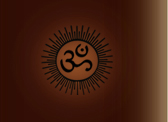The Human physical body is composed of “Saptadhatus”.
“Saptadhatus” is a Sanskrit word, which means
seven constituent elements [Sapta=seven, dhatus=elements].
They are of great importance in Ayurveda. Ayurveda gives specific
treatment methods for diseases related to different dhatus.
The seven dhatus are as follows:
|
 Rasa: Rasa: |
Chyle. |
 Rakta: Rakta: |
Blood. |
 Mamsa: Mamsa: |
Muscle. |
 Majja: Majja: |
Marrow. |
 Asthi: Asthi: |
Bone. |
 Meda: Meda: |
Brain and spinal cord. |
 Sukra: Sukra: |
Sperm and ovum. |
 Ojas: Ojas: |
"Mahadhatu" = Superior dhatu. |
| 1.
Rasa:
This is the first dhatu.
After digestion food becomes a liquid which is called chyle
(rasa in Sanskrit).
Chyle nourishes all the cells of our body. Later it is transformed
into blood. This process may take seven days according to
Ayurveda. |
 |
2. Rakta:
Rakta means blood (= liquid tissue of the body).
It circulates through blood vessels and protects and nourishes
all the cells and tissues of the body. Blood helps in gaseous
exchange (oxygen and carbohydrate) and consists of many types
of cells (e.g. red blood cells, white blood cells, leucocytes).
Each cell has its own functionality.
Generally disease starts from blood. If the disease is chronic
in blood, then it results as “Mehaprakopa” (=
disease due to the impurities in blood).
|
 |
3. Mamsa:
Mamsa is treated as third dhatu of the body. There are several
types of muscle tissue in the body:
- Hridya kandara: Cardiac muscle.
- Vartul kandara: Smooth muscle.
- Asti kandara: Skeletal muscle. These muscles are attached
to the body’s skeleton and help in the movement of
joints (needed for daily activities like walking and running).
|
 |
4. Majja:
Majja is related to bone marrow.
Bone marrow lies within the bone and produces blood. When
this dhatu is affected by disease, it can’t produce
healthy blood.
|
 |
5. Asthi:
Ashti is related to bone. It gives shape and support to
the body. According to Charaka it is difficult to cure any
disease which is related to this dhatu. |
 |
6. Medha:
This dhatu is fatty in nature. According to Ayurveda it
constitutes brain and spinal cord, and also nervous tissue
and adipose tissue. Thoughts and body functions are based
on stimuli which come from brain and spinal cord. |
 |
7. Sukra:
This is the reproductive dhatu. In male it is known as Sukra
and in female it is known as Sronita. |
 |
8. Ojass:
This is called as “Mahadhatu”, which means superior
dhatu. It is divided into two types:
- Somaatmaka ojas: located close to the pineal body.
- Aghnyatmaka ojas: located in the heart. This is fatty
in nature.
The characters of Ojas are described as:
- Veerya: Seeta veerya (gives cooling effect after digestion).
- Colour: White.
- Kaphatmaka (increases Kapha).
Ojas protects all dhatus in the body. |
 |
